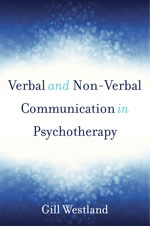Show Me All Your Scars
Lee Gutkind brought together twenty authors to let their voices be heard. These authors wrote about their experiences with mental illness (whether they themselves suffer or a family member), creating an intense, emotional and gripping inner look at mental illness. Just like mental disorders themselves, the stories are diverse in nature. The first entry, Take Care by Ella Wilson, immediately brings the reader into her mind mid-manic episode. Filled with heartbreaking and heavy prose and metaphor, Wilson’s place as the opening story sets the tone for the rest of the book: it’s going to be challenging, confusing, and personal.
Quiet Power: The Secret Strengths of Introverts
In a society that praises and encourages extroverted behavior, Susan Cain’s book Quiet Power: The Secret Strength of Introverts is a lifeline for youth and adolescents who struggle to accept and find the value in their introverted tendencies. Building on previous research on introversion, Cain’s book serves as both a self-help guide for introverts and a learning tool for clinicians seeking to understand introverts and adjust their practice accordingly.
Therapeutic Touch: Research, Practice and Ethics
Touch is essential to human life. From the earliest writings by Ashley Montaqu (1971) who discussed the importance of nurturing touch to help babies thrive physiologically and emotionally to a recent study lead by Nathalie Maitre at Nationwide Children’s Hospital in Columbus, Ohio that demonstrated the significance of sensory experiences in early life on brain development— physical attention during a baby’s development, during our entire lives in fact, is important—the more you hug and cuddle your babies, the more their brains grow.
According to Maitre, our sensory system supporting touch and bodily sensation is the earliest to develop in human beings; further, it forms the basis for other sensory development as well as our cognitive and social development. Maitre’s study established that nurturing touch is essential for infant development with study outcome demonstrating that positive proper touch increased brain activity while negative touch (pin pricks, tube insertions) decreased brain activity.
As human beings, we crave touch. There’s an instinctive need to feel another—be it a lover’s hand, a mother’s breast. The soft fuzz of an animal’s fur, even the gristle of a father’s beard can create pleasurable sensations when contact is loving and supportive. As body psychotherapists, many of us acknowledge the value of appropriate touch in the therapeutic setting—of course within proper boundaries and acceptable containment and with the client’s permission. As therapists, we must be clear about why we want to integrate touch, discuss what kind of touch, and for whose purpose the touch is occuring (certainty not to make the therapist feel better!).
Why Therapy Works: Using Our Minds to Change Our Brains
With remarkable candor, Louis Cozolino opens with an anecdote about the client who first challenged his unquestioning faith in psychotherapeutic efficacy and shook his confidence as a clinician. Needless to say, psychotherapy is in the business of dealing with the intangible, making sense of the amorphous feelings that give rise to suffering, and, thus, this story perfectly captures the doubt that often dispirits both clients and clinicians in the healing process.
The Weirdest People in the World: How the West Became Psychologically Peculiar and Particularly...
Reviewed by: Lily Wu
What is WEIRD? WEIRD is an acronym for Western, Educated, Industrialised, Rich and Democratic. Henrich and his colleagues coined it about...
Our Summer Book Review Issue is Live
We're pleased to share our Summer Book Review Issue, volume 6, number 2, 2016 with our loyal community members and passersby--folks visiting our blog...
Passion & Presence: A Couple’s Guide to Awakened Intimacy and Mindful Sex
One simple sentence says it all: “Great sex is a mind-set, not a skill-set.”
Maci Daye embodies the essence of her new book, Passion & Presence: A Couple’s Guide to Awakened Intimacy and Mindful Sex, in this short statement. Yes, readers receive exercises to practice concepts presented throughout the book, but the crux of success resides in mindfulness including presence, curiosity, and authenticity, and a commitment to one’s self, one’s partner and the relationship.
Change Your Story, Change Your Life
Twenty-four years have passed since my first shamanic journey. When I received Carl Greer’s book, Change Your Story, Change Your Life: Using Shamanic and Jungian Tools to Achieve Personal Transformation, I thought I knew what I’d find in the pages of his text. I was not prepared for the depth of detail—both written by Carl and expected from me, the reader, embarking on a journey of self-transformation.
Promoting healthy attachments: Hands-on techniques to use with your clients
Deborah Gray has written a compelling and easy to follow book to educate therapists on how to strengthen the quality of attachments when working with clients struggling with a variety of attachment difficulties. The book is geared towards therapists looking to learn more about attachment.
The Pocket Guide to the Polyvagal Theory: The Transformative Power of Feeling Safe
I am, admittedly and unabashedly, enthusiastic about Stephen Porges’ work. I’ve attended his workshops, learned his process for measuring heart rate variability as an indicator of vagal tone, interviewed him for several articles published in this magazine, and have read his books and articles. This review is clearly biased. And with that said, I will offer my honest opinions and not side step points that for some may or may not be considered 100 percent positive.
For those new to Porges’ work, he is noted as the originator of the Polyvagal Theory (PVT), which is his perspective of how our autonomic nervous system, dependent on phylogenetic transitions/shifts that occurred between reptiles and mammals, resulted in specific adaptations in vagal pathways regulating the heart, which in turn impact our lives.














